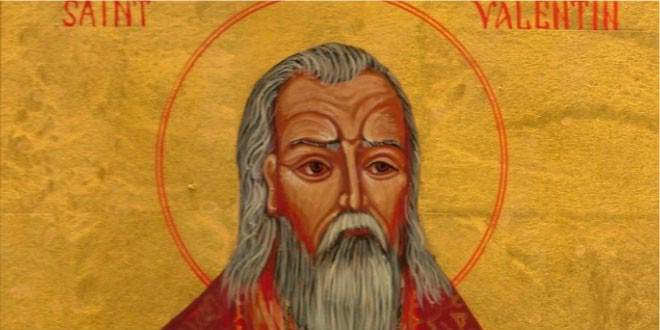St. Valentine’s Day Celebrations:
In the 1800’s stories abounded that the roots of St. Valentine’s Day reached back to Rome and the festival of Lupercalia on the 15th of February, but modern scholars discount that idea.
Despite the holiday’s mysterious and puzzling roots, it is obvious that people have observed St. Valentine’s Day for centuries. The famed London diarist Samuel Pepys mentioned observances of the day in the mid-1600s, complete with elaborate gift giving among the wealthier members of society.
February 14: St. Valentine beheaded
Under the rule of Claudius the Cruel, Rome was involved in many unpopular and bloody campaigns. The emperor had to maintain a strong army, but was having a difficult time getting soldiers to join his military leagues. Claudius believed that Roman men were unwilling to join the army because of their strong attachment to their wives and families.
To get rid of the problem, Claudius banned all marriages and engagements in Rome. Valentine, realizing the injustice of the decree, defied Claudius and continued to perform marriages for young lovers in secret.
When Valentine’s actions were discovered, Claudius ordered that he be put to death. Valentine was arrested and dragged before the Prefect of Rome, who condemned him to be beaten to death with clubs and to have his head cut off. The sentence was carried out on February 14, on or about the year 270.
Legend also has it that while in jail, St. Valentine left a farewell note for the jailer’s daughter, who had become his friend, and signed it “From Your Valentine.”
For his great service, Valentine was named a saint after his death.
In truth, the exact origins and identity of St. Valentine are unclear. According to the Catholic Encyclopedia, “At least three different Saint Valentines, all of them martyrs, are mentioned in the early martyrologies under the date of 14 February.” One was a priest in Rome, the second one was a bishop of Interamna (now Terni, Italy) and the third St. Valentine was a martyr in the Roman province of Africa.
Legends vary on how the martyr’s name became connected with romance. The date of his death may have become mingled with the Feast of Lupercalia, a pagan festival of love. On these occasions, the names of young women were placed in a box, from which they were drawn by the men as chance directed. In 496 A.D., Pope Gelasius decided to put an end to the Feast of Lupercalia, and he declared that February 14 be celebrated as St Valentine’s Day.
Gradually, February 14 became a date for exchanging love messages, poems and simple gifts such as flowers.
 Kids Portal For Parents India Kids Network
Kids Portal For Parents India Kids Network







